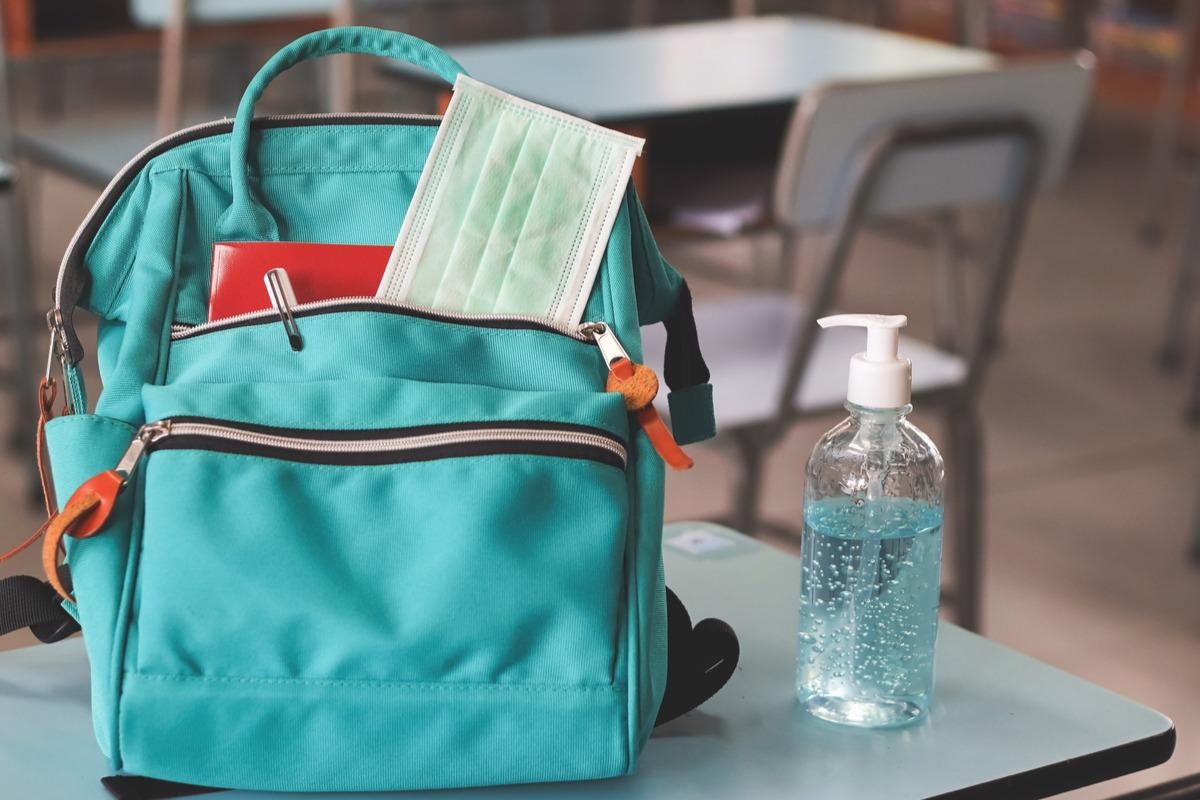In a recent study posted to the medRxiv* preprint server, researchers assessed the robustness and feasibility of a layered coronavirus disease 2019 (COVID-19) mitigation strategy involving the use of ionizers, masking, filtration, and ventilation in limiting in-school transmission of severe acute respiratory syndrome coronavirus 2 (SARS-CoV-2).

In the present-day scenario, elucidating the mechanisms of SARS-CoV-2 transmission is essential for mitigating COVID-19. Studies have reported on the SARS-CoV-2 transmission in schools that could accelerate viral evolution and thereby further prolong the COVID-19 pandemic.
The study and results
In the present study, researchers used a computational fluid dynamics (CFD) model to simulate the SARS-CoV-2 transmission in schools and evaluate the efficacy of layered COVID-19 mitigation strategies required if schools were to be kept open. They assessed the effect of infection-control methods in several scenarios that corresponded to variants with different viral loads.
The model was designed to assess the viral transmission in indoor settings assuming aerosol transmission of the airborne SARS-CoV-2 in enclosed spaces. The classroom was assumed to be a well-mixed container.
The team evaluated the virion concentration released into the classroom air by a viral emitter (infected individual). The estimated concentration of emitted virions was subsequently inserted into the model to determine the likelihood of uninfected individuals becoming SARS-CoV-2-positive.
The effects of air quality (ionizers, ventilation, and filtration) and masking on the steady-state viral concentrations of the emitted virions by the infected and inhaled virions by the uninfected individual were assessed for Omicron, Delta, and Wuhan strains with differing viral loads to evaluate the effect of viral evolution on viral loads.
The model estimated that for a standard classroom (120 inches x 240 inches x 240 inches), the steady-state viral concentration emitted by a Wuhan-infected (low viral load) individual was about four virions/L, which would increase up to hundreds and thousands in case of infection by Delta (high viral load) and Omicron (medium viral load) infections. The virion steady-state concentration would be reached if an emitter would be present in the room for one to two hours in the case of the Wuhan-like variant and within minutes in the case of the Delta- or Omicron-like variant. This indicates that the concentration of emitted virions was directly proportional to the viral load of the SARS-CoV-2 strain.
If the emitter was masked, the virion emission rate would lower, decreasing the steady-state virion concentration. However, masking had no impact on the period in which the virion steady-state concentration would be attained. After the emitter exited the room, viral loads would return to almost zero in five hours.
By using air filters, the steady-state virion concentration would be lower since the virions would be eradicated from the classroom at a faster rate. For emitters infected by the Wuhan strain, masking and air filtration would decrease the virion steady-state concentration to one virion/L of air. However, for those infected by the Delta or Omicron variants, the steady-state virion concentration would be persistently high despite the high rate and efficiency of virion emission.
Further, virion emissions could also be reduced by ionizers to less than one virion per liter per hour in case of slow virion emission (Wuhan strain infection or masked emitter). The ionizers inactivate virions and eliminate them from the air. However, if the emitter had Delta infection or if virion emission continued for several hours (such as an eight-hour school day), the viral concentrations could attain high levels despite ionizer use.
To acquire COVID-19, SARS-CoV-2 needs to be inhaled and deposited on the nasopharyngeal and airway mucosal surfaces. The amount of virion deposition in the nasopharynx was assessed by CFD airflow simulations which showed that 0.6% of the virions inhaled per breath were deposited in the nasopharynx. This estimated nasopharyngeal virion deposition value was used to evaluate the virion deposition in the airway mucosa of an uninfected individual per hour.
High-quality masks that filter out almost all (>95%) virions could decrease viral spread in high-risk zones and increase the time for transmission by 10-folds if the emitter is masked (single masking). If both the virion emitting and inhaling individuals are masked (double masking), less effective masks such as well-fitted surgical masks could attain a similar transmission time. Additionally, the team noted that if an emitter sat in the middle or rear end of the classroom, aerosolized virions could be efficiently transmitted to uninfected individuals.
Conclusion
To conclude, the study findings showed that reopening schools without robust measures for mitigating COVID-19 such as masks, ionizers, air filters, widespread COVID-19 tests, and school closures during periods of high local viral transmission and restricted classroom capacity (by providing remote schooling) could accelerate the COVID-19 pandemic.
*Important notice
medRxiv preliminary scientific reports that are not peer-reviewed and, therefore, should not be regarded as conclusive, guide clinical practice/health-related behavior, or treated as established information.
- Van Egeren, D. et al. (2022) "No magic bullet: limiting in-school transmission in the face of variable SARS-CoV-2 viral loads". medRxiv. doi: 10.1101/2022.03.25.22272956. https://www.medrxiv.org/content/10.1101/2022.03.25.22272956v1
Posted in: Medical Science News | Medical Research News | Disease/Infection News
Tags: Coronavirus, Coronavirus Disease COVID-19, covid-19, Efficacy, Evolution, Nasopharyngeal, Omicron, Pandemic, Respiratory, SARS, SARS-CoV-2, Severe Acute Respiratory, Severe Acute Respiratory Syndrome, Syndrome

Written by
Pooja Toshniwal Paharia
Dr. based clinical-radiological diagnosis and management of oral lesions and conditions and associated maxillofacial disorders.
Source: Read Full Article